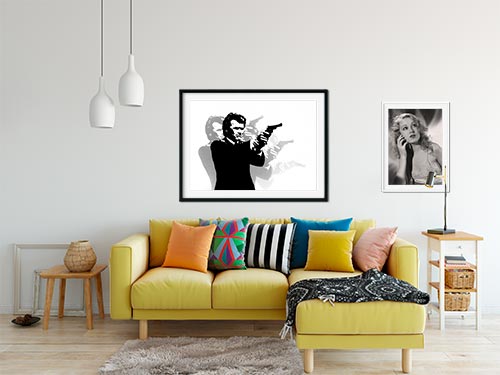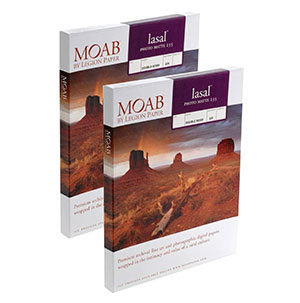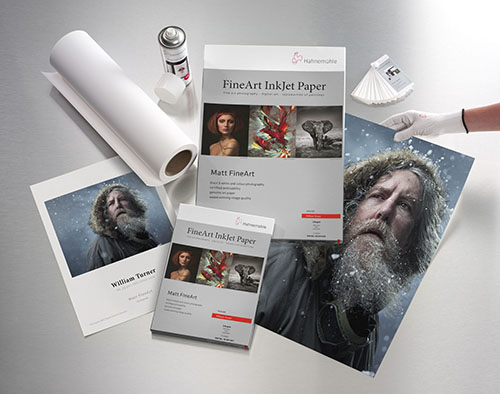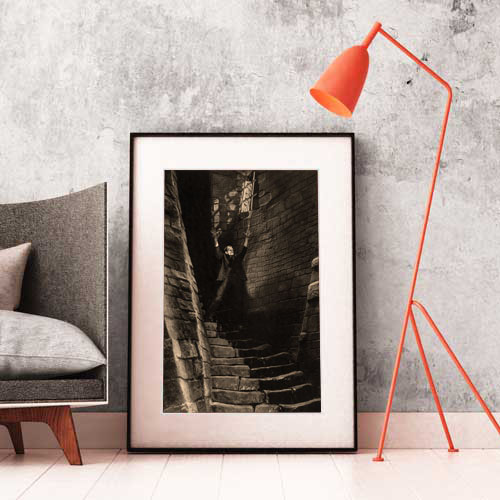Exceptional theatrical publicity shot featuring Peter Cushing (Victor Frankenstein) and Christopher Lee (as the Creature). Here,Victor is putting on a glove and ready to revive the Creature who is hanging high up on a hook with rope.
The Curse of Frankenstein is a 1957 British horror film by Hammer Film Productions, loosely based on the 1818 novel Frankenstein; or, The Modern Prometheus by Mary Shelley. It was Hammer's first color horror film, and the first of their Frankenstein series. Its worldwide success led to several sequels, and it was also followed by new versions of Dracula (1958) and The Mummy (1959), establishing "Hammer Horror" as a distinctive brand of Gothic cinema. The film was directed by Terence Fisher and stars Peter Cushing as Victor Frankenstein and Christopher Lee as the Creature, with Hazel Court and Robert Urquhart.
Professor Patricia MacCormack called it the "first really gory horror film, showing blood and guts in color". Producer Max Rosenberg originally approached Michael Carreras at Hammer Films with a deal to produce Frankenstein and the Monster (Rosenberg claims that he came up with the title) from a script by Milton Subotsky. Later, both men were cut out of their profit participation making only a $5000 fee for bringing the production to Hammer. Rosenberg and Subotsky later established Amicus Films, Hammer's main rival in the production of horror films during the 1960s.
Peter Cushing, who was then best known for his many high-profile roles in British television, had his first lead part in a movie with this film. Meanwhile, Christopher Lee's casting resulted largely from his height (6' 5"), though Hammer had earlier considered the even taller (6 '7") Bernard Bresslaw for the role. Hammer refrained from duplicating aspects of Universal's 1931 film, and so it was down to make-up artist Phil Leakey to design a new look for the creature bearing no resemblance to the Boris Karloff original created by Jack Pierce. Production of The Curse of Frankenstein began, with an investment of £65,000, on November 19th,1956 at Bray Studios with a scene showing Baron Frankenstein cutting down a highwayman from a wayside gibbet.
The film opened at the London Pavilion on May 2nd, 1957 with an X certificate from the censors. The film was a tremendous financial success and reportedly grossed more than 70 times its production cost during its original theatrical run. In the UK, the film earned theatrical rentals of $1.9 million. According to Kinematograph Weekly the film was "in the money" at the British box office in 1957. According to another account the film made £300,000 in Britain and £500,000 in Japan.
In the US the outstanding box office success was a surprise. In its first week at the Paramount Theatre on Broadway Variety reported,"Curse" Wham $72,000" and noted,"it gave the Par flagship its biggest opening week on straight-film policy in the last two years". Variety continued to be impressed with its box office numbers as it opened across the US. "Curse" Terrific $30,900" in its first week in Los Angeles with supporting feature X the Unknown. In an era when horror films typically played for one week, Curse was often held over for two and sometimes three weeks in major markets like Boston.
Product Enquiry
Kodak Professional Endura Paper
Kodak Endura papers provide an incredible amount of detail and smooth transition of tones. Designed for the professional photographer in mind, looking for a more traditional photo print style, Kodak Endura provides an extended print life and color gamut almost at the level of a high end fine art paper print.
Archival Matte Paper
Archival Matte Paper, also known as Moab Lasal Photo Matte, is our house stock fine art paper and is an economical favorite for fine art reproductions and photo prints. It features a smooth surface, heavy weight (230 g, 9.5-mil), neutral white, matte paper engineered for accurate color reproduction that provides high contrast and high-resolution output. This paper is acid-free, making it the perfect choice for both photography & fine art reproductions.
Giclee William Turner Paper by Hahnemühle
The William Turner by Hahnemühle is one of the most popular papers used in the Giclee printing industry. This is a 310g natural white mould made natural line paper with 100% rag content making it highly archival. It has a slight coarse texture which gives photos and artwork an elegant look. These fine art paper prints (also known as Giclee) are ordered by galleries, individual artists and photographers. The papers and inks are not only archival but use some of the most accurate print technology for full color prints.
- Giclee prints use very expensive archival pigmented inks.
- Highest level of color gamut available in printing (12 color printing).
- Exceptional black & white printing.
- Fade resistant, pigmented inks which provide a superior color range compared to other types of inks. Widely preferred in fine art and photography circles.
- We ONLY use professional grade fine art and photo paper that resist yellowing and aging.



Framing
We offer wood and metal frames, custom cut & joined to order. Each framed print includes hanging hardware and foamcore backer.
Matting
We use conservation grade 100% virgin alpha-cellulose 2 ply mats with white core. Acid-free and lignin-free, these are both face resistant and meet all conservation quality standards set by the Fine Art Trade Guild. Mats are digitally cut for ultimate precision. The window will be 1/8″ smaller than the print dimensions.
Glazing (Acrylic Glass)
We offer custom cut panes of shatter-proof, acrylic glass, to protect your valuable artwork and prints.
Premium Clear
Framing grade clear acrylic is shatter resistant and lightweight.
Reflection Control
With its matte finish, Tru Vue Reflection Control® Acrylic scatters light to diminish unwanted glare.
Conservation Clear
Tru Vue Conservation Clear® Acrylic is a framing industry staple, blocking up to 99% of UV rays for ultimate protection.
Conservation Reflection Control
Tru Vue Conservation Reflection Control® Acrylic scatters and diffuses light to reduce unwanted glare. Blocks up to 99% of UV rays.







